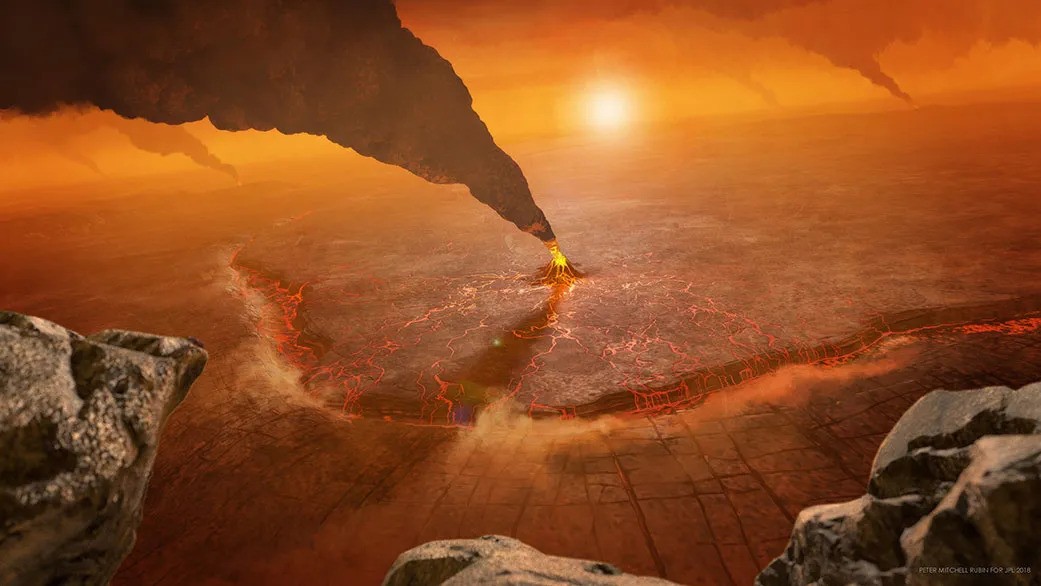Scientists think about how to find out if there are active volcanoes on Venus. We do not see direct evidence of their existence, but the composition of the planet’s atmosphere hints at this and there are several promising ways to accurately estimate their number.

Atmosphere of Venus
Our neighbor Venus has a dense cloud cover. Thanks to it, we cannot see its entire surface in visible or infrared light. Among other things, because of this, we still do not have a clear answer about whether there are active volcanoes on the neighboring planet.
The fact that the atmosphere of Venus, which mainly consists of carbon dioxide, is largely formed by volcanoes has been known for a long time. And there are quite a few of them on the surface — about 85 thousand. However, it is still unknown if there is at least one of them that is still erupting.
It is precisely this question that the authors of a new study published in Space Science Reviews are thinking about. They note that signs of its existence should be looked for in the atmosphere of the planet itself.
What traces can volcanoes leave in the atmosphere of Venus
According to the authors of the article, there are two approaches to determining traces of volcanic activity in the atmosphere of Venus. The first of them is to measure fluctuations in the content of sulfur dioxide in it. This component is always present in the gas envelope of the neighboring planet. However, under the influence of fresh eruptions, its concentration may increase. However, scientists suspect that different types of interaction with the surface can lead to the same result.
The second approach is to look for short-term fluctuations in the planet’s atmosphere — the appearance of substances that are usually not there, but which can be caused by active volcanoes. These include, for example, water vapor and ash. So far, this has not been possible, but soon new probes should provide scientists with such an opportunity.
One of them, DAVINCI, is designed specifically for on-site measurement in the atmosphere. It will have several spectrometers, inertial measurement units and high-tech cameras to collect data in the lower layers of the planet’s atmosphere. The spectrometers should be able to directly and clearly detect traces of volcanic gases in the atmosphere. Ionic concentrations, such as the deuterium/hydrogen ratio, may also indicate the current volcanic release of gases.
But what about the gases higher in the atmosphere? EnVision, another mission, will specialize in this very thing. It will use various types of near-IR and ultraviolet spectroscopy. This may help unravel some of the mysteries in the upper clouds of Venus, including where an unknown reservoir of sulfur dioxide is located.
According to phys.org
Follow us on Twitter to get the most interesting space news in time
https://twitter.com/ust_magazine


